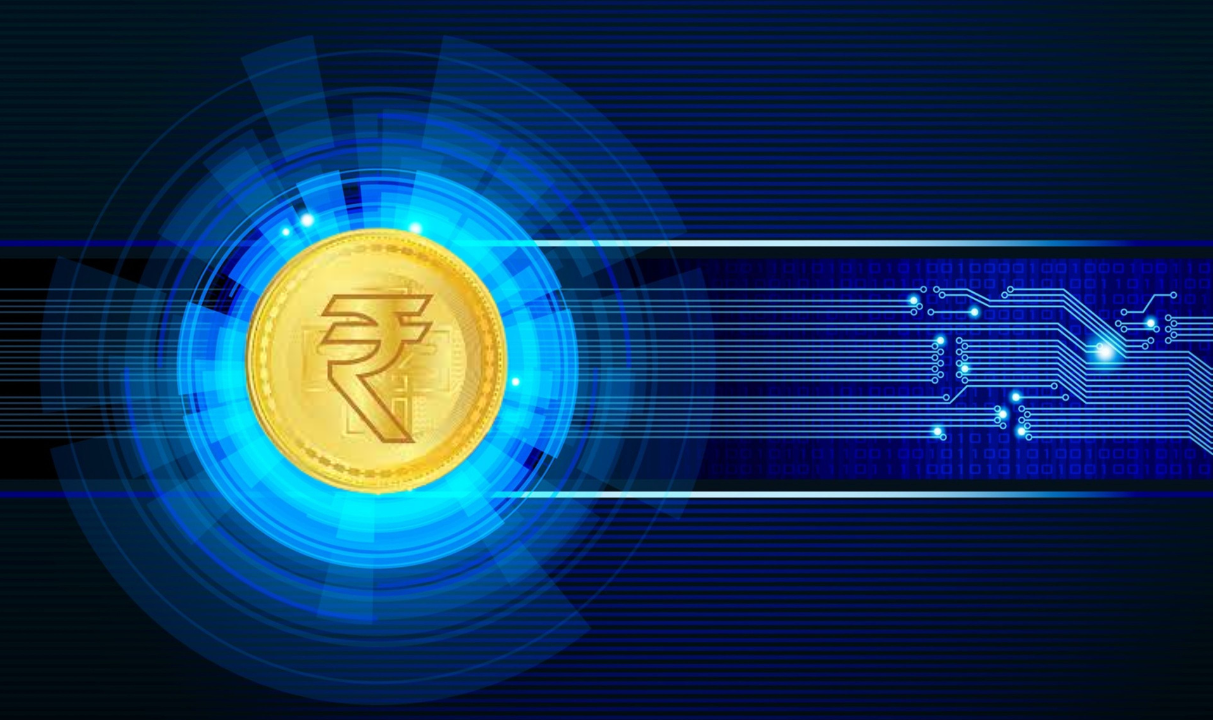The Reserve Bank of India (RBI) launched India’s first digital rupee pilot project for the wholesale sector on the 1st of November 2022. This is also known as the central bank digital currency (CBDC), which it categorizes as legal tender in a digital form.
It is launched in some selected locations in India for some user groups having merchants and customers which means that a limited user group consisting of customers and retailers would be testing out the first pilot for the Digital Rupee.
What is a Digital Rupee or Central Bank Digital Currency?
The Digital Rupee (e₹) or eINR or E-Rupee is a tokenized digital version of the Indian Rupee and is issued by the Reserve Bank of India (RBI) as a central bank digital currency (CBDC). The e-rupee is a virtual currency that reduces the time and cost of making payments. It will help in frictionless digital transactions in electronic format. Users can pay directly, saving money on transaction fees.


Digital currency can be exchanged for physical currency equivalent to paper notes because the CBDC is freely convertible against the real physical currency. To use e-rupees, unlike UPI, a customer does not require a bank account.
The RBI has listed nine banks for the Digital Currency rollout and they are State Bank of India, Bank of Baroda, Union Bank of India, HDFC Bank, ICICI Bank, Kotak Mahindra Bank, Yes Bank, IDFC First Bank and HSBC.
In a token-based system, a common public key will be used to initiate the transfer while a private key such as a user-defined password will be used as a verification tool to complete the transfer.
There are two categories of CBDC.
- Commercial (CBDCR): CBDC for the general public.
- Wholesale (CBDC-W) is meant to be used only by a small group of banks.
Will it replace the Physical Rupee?
Indian Digital Rupee will be added as an additional legal currency in circulation and it will not replace the physical Rupee.
The Digital Rupee does not need a bank intermediary for online transactions and will rely on blockchain technology with RBI being the guarantor.
Is Digital Rupee helpful?
The Digital Rupee will save printing costs, holding, and storing costs as well as it will also save paper which is helpful in saving the environment.
In the month of November 2022, e₹-W on average did ₹325 crores worth of deals per day. For the first two days of the e₹-R pilot, ₹3 crore worth of digital currencies were created by RBI. Unlike physical currency, there is an option for recovery against a loss of e₹. In the e₹-R pilot phase, RBI is testing specific use cases for P2P and P2M transactions.
RBI is also planning to extend the use case of e₹ in cross-border transactions at the institutional and individual levels. As per Minister of State for Finance Pankaj Chaudhary, CBDC in itself will not earn any interest but can be converted into bank deposits. He also clarified that e₹-R is using Blockchain technology.
Digital Rupee vs Cryptocurrency
Unlike private cryptos wherein any individual can compete to mine and create the cryptocurrency, only the central bank can issue the CBDC and can simply opt for conversion of the bank’s existing balances to CBDC balances. So, CBDCs will provide the public with the benefits of virtual currencies, while ensuring consumer protection by avoiding the damaging social and economic consequences of private virtual currencies.




